You may not be surprised to learn that Colorado is ranked in the top 10 of pet-friendly states in the country. With hundreds of miles of trails coupled with hundreds of days of sunshine, it’s not hard to tell why Colorado is the perfect place for a pet!
If you are a dog owner and a homeowner, you may wonder how you can give your pet the best outdoor experience while saving the best of your landscape. We understand it can be a challenge to keep a dog happy while preserving your outdoors, but it is possible – plus it can make for an even more interesting and exciting outdoor environment!
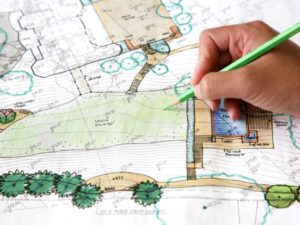 As you consider landscaping ideas and options, be sure you understand the characteristics of your dog. Is Rex looking for a place to rest? Does Lulu want to sniff out the smells? Will Sparky explore everyone’s yard if possible? Knowing what your dog naturally wants to do is a good way to help determine what’s best to do in terms of the landscape.
As you consider landscaping ideas and options, be sure you understand the characteristics of your dog. Is Rex looking for a place to rest? Does Lulu want to sniff out the smells? Will Sparky explore everyone’s yard if possible? Knowing what your dog naturally wants to do is a good way to help determine what’s best to do in terms of the landscape.
Whether you’ve had a dog for years or you are considering getting a dog, we’ve got a list of dog-friendly landscaping tips that will improve your outdoor space and keep your pup happy!
A Path to Success: Dogs like to roam and often create regular paths around the yard. Watch the behavior of your pet and plan on adding a running track for exercise that blends in with other planted elements or design a long, winding path that gives an older dog exercise.
Mark the Spot: Male dogs, in particular, have an inherent desire to mark their territory at the outermost boundaries of a yard. If your pup is peeing in one spot over and over, or if you are getting a new dog and want to train him to relieve himself in a single place, plant an attractive piece of driftwood or sculptural piece of wood to encourage a marking post!
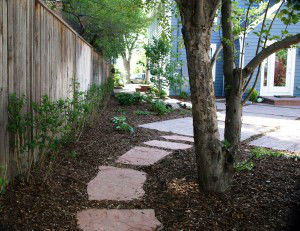 Easy Does It: As you survey your landscape to make it dog-friendly, be sure to think about comfort for your animal. Gentle hardscape, such as smooth flagstone pavers, and smaller mulch are softer on the paws in all-weather while keeping your pup a bit cleaner on adventures.
Easy Does It: As you survey your landscape to make it dog-friendly, be sure to think about comfort for your animal. Gentle hardscape, such as smooth flagstone pavers, and smaller mulch are softer on the paws in all-weather while keeping your pup a bit cleaner on adventures.
Shady Retreats: Colorado summers can get hot for your four-legged friend! Consider a beautiful veranda, covered patio, gazebo or shady arbor that your dog can rest and enjoy a break from the Colorado sun. While you’re at it, think about adding a water feature that your dog can drink from or cool off in safely. These features look amazing in any landscape, so you and your family can enjoy them with Fido, too!
Planting Strategies: We know you will want beautiful plants, shrubs, and flowers to enjoy in your Colorado landscape and there’s no reason you can’t have this plus a dog as well! When considering planting options, landscape areas densely to discourage dogs from trampling on plantings. Also, think about raised beds or mounds and plant more mature, larger plants that get a head-start on your pup and are tough enough to handle any doggie visits. Ornamental grasses and shrubs can also protect beds that have more delicate foliage in the center.
 Stop the Hop: Whether your dog wants to visit the neighbors, you are concerned about aggressive coyotes, or you are looking for a new landscaping feature, consider a fence! Fencing comes in all shapes, sizes, and colors and can not only control your pup’s activities, but it can also add value to your property and accent your landscape! If you’ve got a digger, consider adding natural stone, wood or decorative blocks at the base to keep Trixie on her home turf.
Stop the Hop: Whether your dog wants to visit the neighbors, you are concerned about aggressive coyotes, or you are looking for a new landscaping feature, consider a fence! Fencing comes in all shapes, sizes, and colors and can not only control your pup’s activities, but it can also add value to your property and accent your landscape! If you’ve got a digger, consider adding natural stone, wood or decorative blocks at the base to keep Trixie on her home turf.
Ready to create your dog-friendly yard? We are here to help! Call The Landscaping Company at (303) 922-9889 or contact us online to sniff out all the options!
 Now’s the Time
Now’s the Time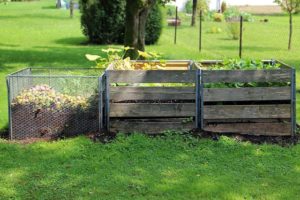
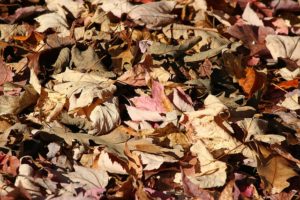
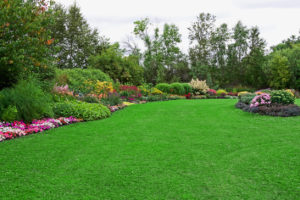
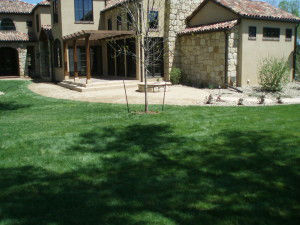
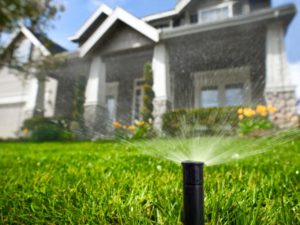 Plan on less frequent, deep watering to promote stronger roots and a green, healthy lawn. It may seem counterintuitive but watering your grass less often, but for a longer period, actually increases drought intolerance.
Plan on less frequent, deep watering to promote stronger roots and a green, healthy lawn. It may seem counterintuitive but watering your grass less often, but for a longer period, actually increases drought intolerance.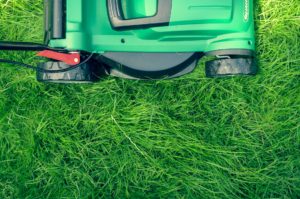 Scrap the mower bag and allow the cut grass clippings to fall back onto the lawn. They will act as a mulch to retain moisture and become a fertilizer as the clippings decompose. The exception? Remove cut grass clippings from areas near storm drains and any water streams to avoid contaminating water sources with grass fertilizer or pesticides.
Scrap the mower bag and allow the cut grass clippings to fall back onto the lawn. They will act as a mulch to retain moisture and become a fertilizer as the clippings decompose. The exception? Remove cut grass clippings from areas near storm drains and any water streams to avoid contaminating water sources with grass fertilizer or pesticides.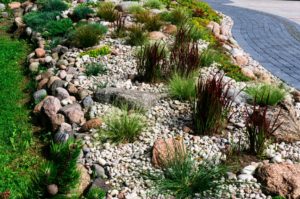 When you plan out your Colorado garden, consider using plants native to the area and those with lower water needs. Xeriscape options create beautiful, natural results! Your garden will be less thirsty and produce color and interest year-round.
When you plan out your Colorado garden, consider using plants native to the area and those with lower water needs. Xeriscape options create beautiful, natural results! Your garden will be less thirsty and produce color and interest year-round.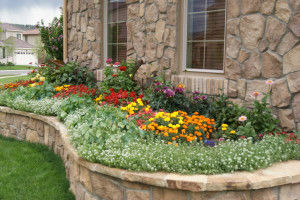 To check if your flower beds are too dry, get a handful of soil and make it into a ball. Does it crumble immediately? It’s too dry and needs watering. When you push your finger into the soil ball, does it break apart? It’s probably just the right moisture. Is it muddy? It’s too wet.
To check if your flower beds are too dry, get a handful of soil and make it into a ball. Does it crumble immediately? It’s too dry and needs watering. When you push your finger into the soil ball, does it break apart? It’s probably just the right moisture. Is it muddy? It’s too wet. To conserve moisture and avoid evaporation, add up to 3” inches of mulch around plants and in flower beds. Bark nuggets or shredded bark work to shade the soil and keep it cooler in the summer. Pea gravel as a mulch can also work, and add a decorative element, for xeric plants that require shading all the way up to the plant crown where the plant emerges from the ground.
To conserve moisture and avoid evaporation, add up to 3” inches of mulch around plants and in flower beds. Bark nuggets or shredded bark work to shade the soil and keep it cooler in the summer. Pea gravel as a mulch can also work, and add a decorative element, for xeric plants that require shading all the way up to the plant crown where the plant emerges from the ground.